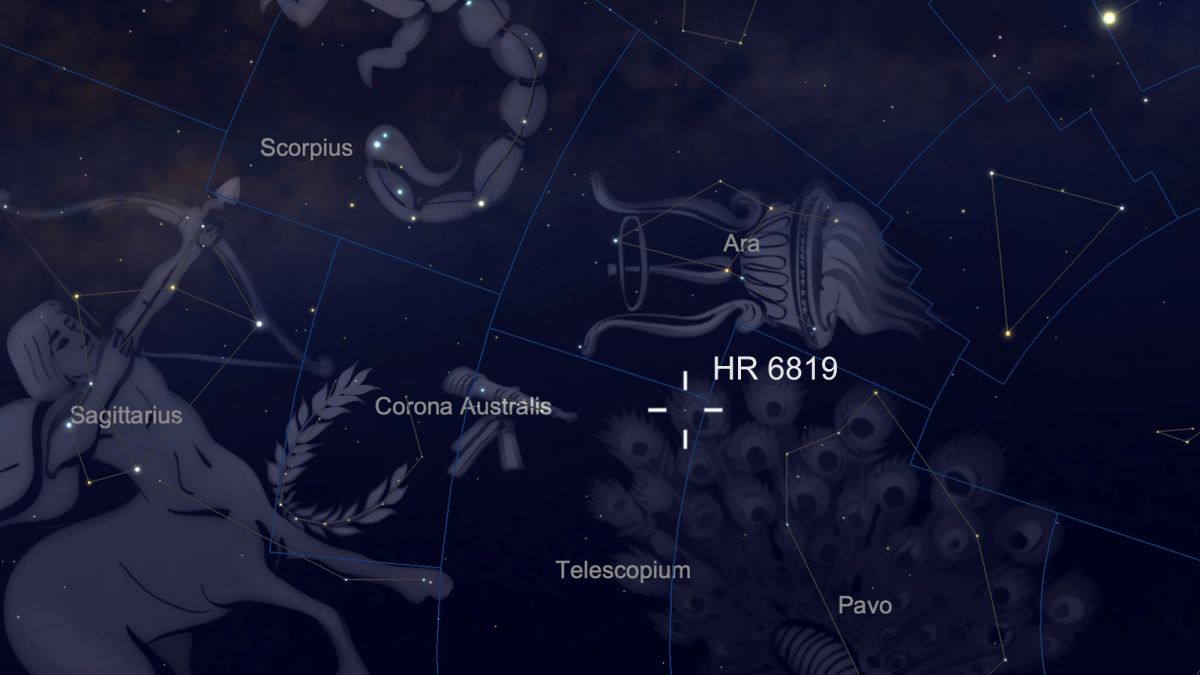The black hole, which is lurking 1,000 light-years from Earth in the southern constellation of Telescopium, belongs to a system with two companion stars that are bright enough to observe with the naked eye. But you won’t be able to see the black hole itself; the massive object has such a strong gravitational pull that nothing — not even light — can escape it.
Astronomers discovered this black hole while studying what they thought was just a binary star system or two stars that orbit a common centre of mass. They were using the MPG/ESO 2.2-meter telescope at the La Silla Observatory in Chile to observe the binary, known as HR 6819, as part of a broader study on double-star systems. When they analyzed their observations, the researchers were shocked to learn that a third object was hiding in the system: a black hole.
Although the astronomers could not directly observe the black hole, they were able to infer its presence based on its gravitational interactions with the other two objects in the system. By observing the system for several months, they were able to map out the stars’ orbits and figure out that another massive, unseen object must be acting in the system.
The observations also showed that one of the two stars orbits the invisible object every 40 days, while the other star hangs out by itself at a much greater distance from the black hole.
They calculated that the object is a stellar-mass black hole — a black hole that forms from the collapse of a dying star — that’s about four times the mass of the sun.
“An invisible object with a mass at least four times that of the sun can only be a black hole,” Thomas Rivinius, a scientist with the European Southern Observatory who led the new study, said in a statement. “This system contains the nearest black hole to Earth that we know of,” he added.
After HR 6819’s black hole, the nearest known black hole is about 3,000 light-years away from Earth in the constellation Monoceros. But there could still be others lurking even closer that have yet to be detected; astronomers estimate that there are millions of black holes in our galaxy alone.
The black hole in HR 6819 is one of the first stellar-mass black holes found in our galaxy that does not release bright X-rays while violently interacting with its companion stars, and the discovery could help researchers find other similarly “quiet” black holes in the Milky Way, according to the statement.
“There must be hundreds of millions of black holes out there, but we know about only very few,” Rivinius said. “Knowing what to look for should put us in a better position to find them.”
HOW CAN WE OBSERVER HR 6819?
While you may not be able to find the black hole while stargazing from your backyard, skywatchers in the Southern Hemisphere can see the stars in the HR 6819 system in the night sky without the help of binoculars or a telescope.
“We were totally surprised when we realised that this is the first stellar system with a black hole that can be seen with the unaided eye,” Petr Hadrava, a scientist emeritus at the Academy of Sciences of the Czech Republic in Prague and co-author of the study, said in the statement.
The duo appears as a single, fifth-magnitude star in the modern constellation of Telescopium, near the border with the constellation of Pavo, the peacock. On the magnitude scale, in which smaller numbers denote brighter objects, the faintest objects visible to the human eye are at magnitude 6.5. Currently shining at magnitude 5.4 — just slightly brighter than Uranus, the dimmest visible planet — HR 6819 is just barely bright enough for our eyeballs
